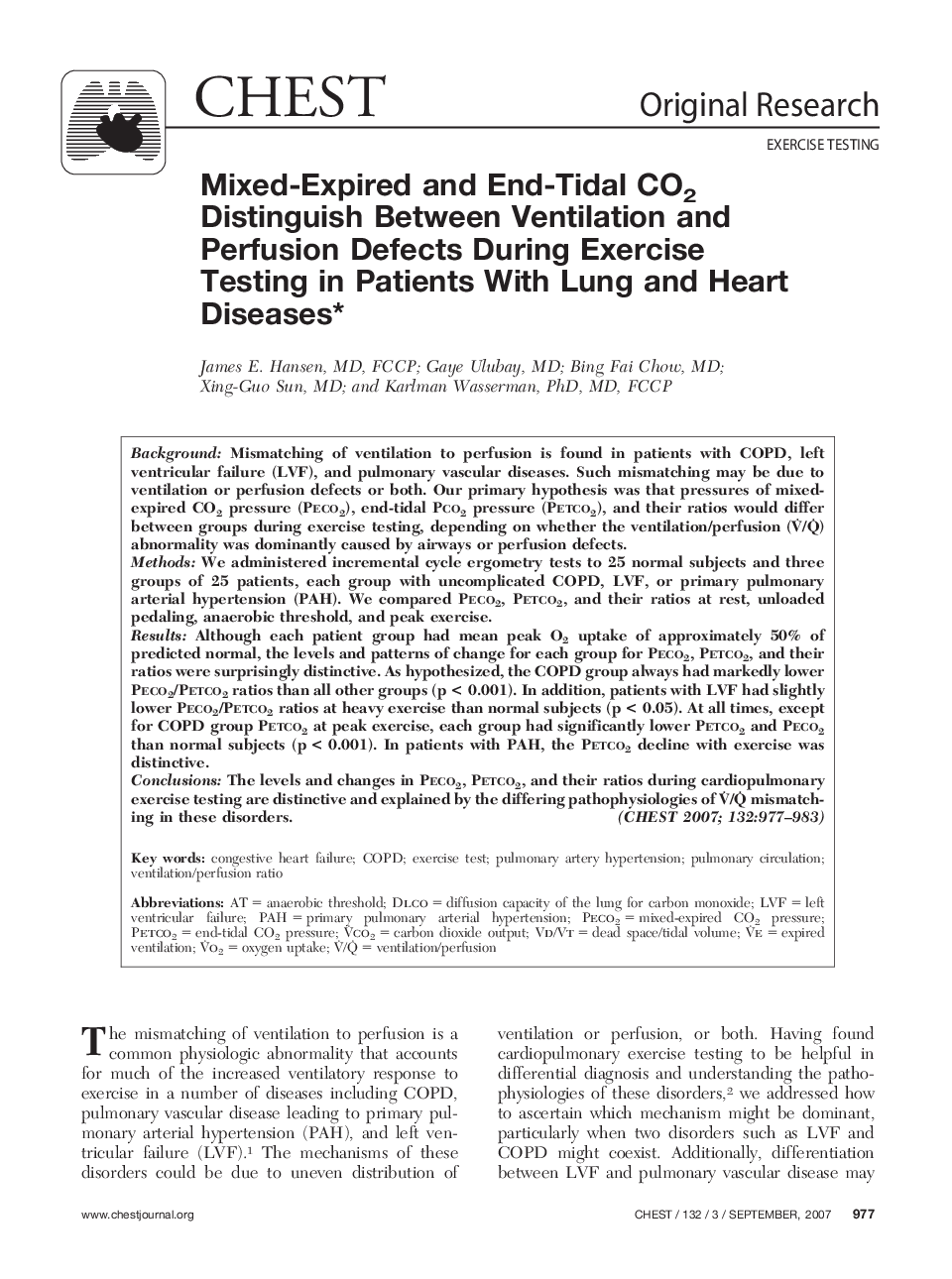| Article ID | Journal | Published Year | Pages | File Type |
|---|---|---|---|---|
| 2905123 | Chest | 2007 | 7 Pages |
BackgroundMismatching of ventilation to perfusion is found in patients with COPD, left ventricular failure (LVF), and pulmonary vascular diseases. Such mismatching may be due to ventilation or perfusion defects or both. Our primary hypothesis was that pressures of mixed-expired CO2 pressure (Peco2), end-tidal Pco2 pressure (Petco2), and their ratios would differ between groups during exercise testing, depending on whether the ventilation/perfusion ( V˙/ Q˙) abnormality was dominantly caused by airways or perfusion defects.MethodsWe administered incremental cycle ergometry tests to 25 normal subjects and three groups of 25 patients, each group with uncomplicated COPD, LVF, or primary pulmonary arterial hypertension (PAH). We compared Peco2, Petco2, and their ratios at rest, unloaded pedaling, anaerobic threshold, and peak exercise.ResultsAlthough each patient group had mean peak O2 uptake of approximately 50% of predicted normal, the levels and patterns of change for each group for Peco2, Petco2, and their ratios were surprisingly distinctive. As hypothesized, the COPD group always had markedly lower Peco2/Petco2 ratios than all other groups (p < 0.001). In addition, patients with LVF had slightly lower Peco2/Petco2 ratios at heavy exercise than normal subjects (p < 0.05). At all times, except for COPD group Petco2 at peak exercise, each group had significantly lower Petco2 and Peco2 than normal subjects (p < 0.001). In patients with PAH, the Petco2 decline with exercise was distinctive.ConclusionsThe levels and changes in Peco2, Petco2, and their ratios during cardiopulmonary exercise testing are distinctive and explained by the differing pathophysiologies of V˙/ Q˙ mismatching in these disorders.
